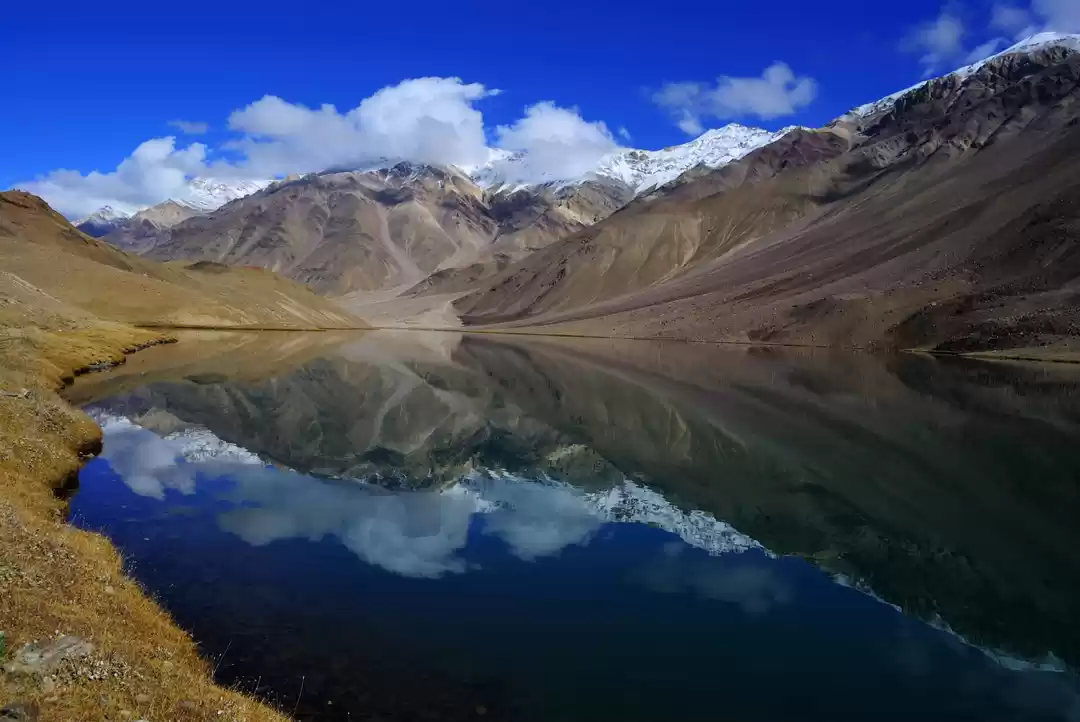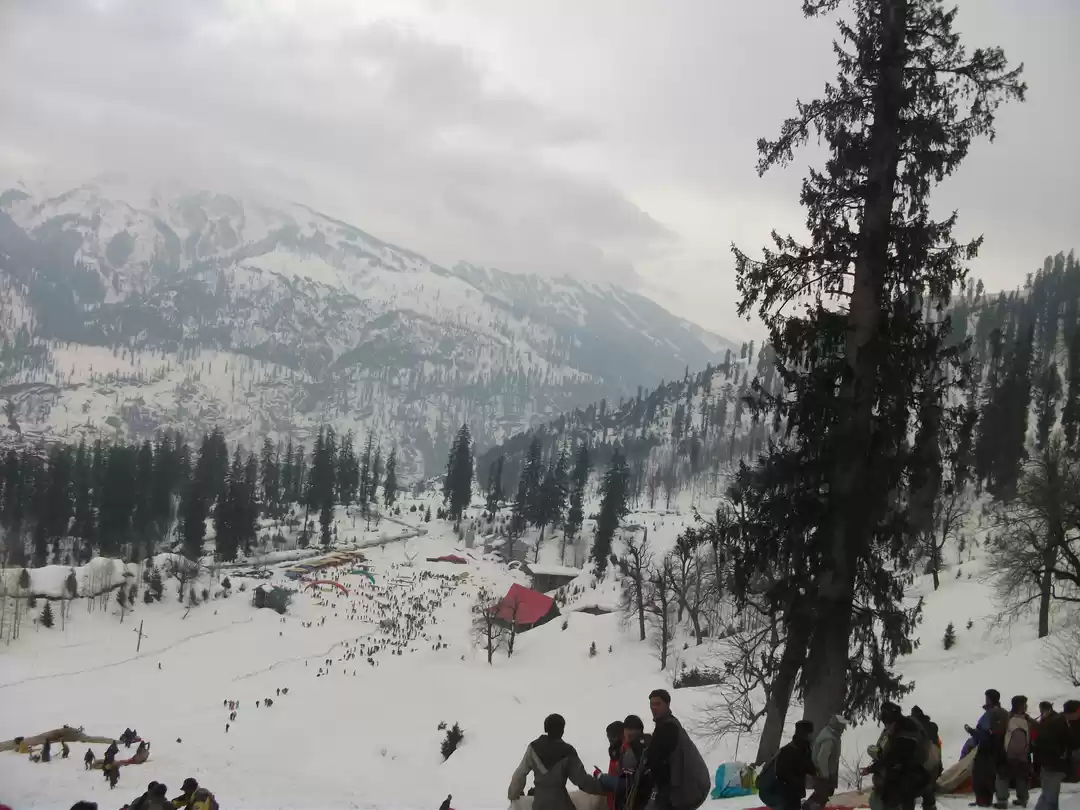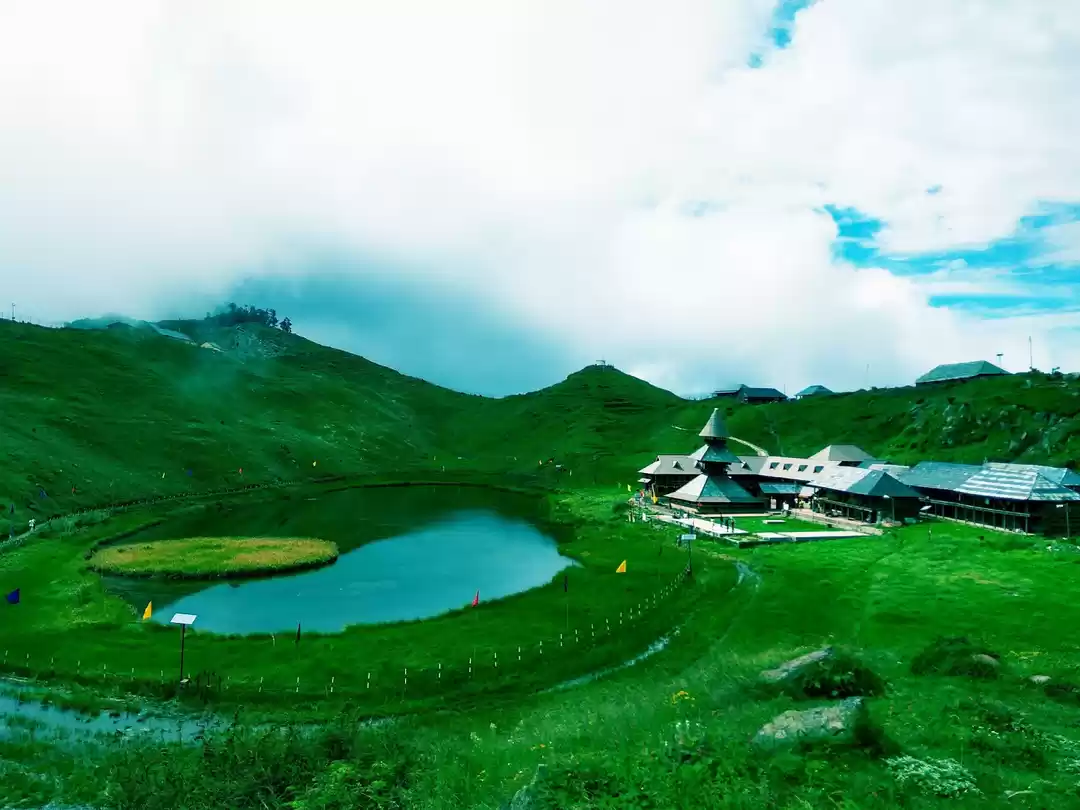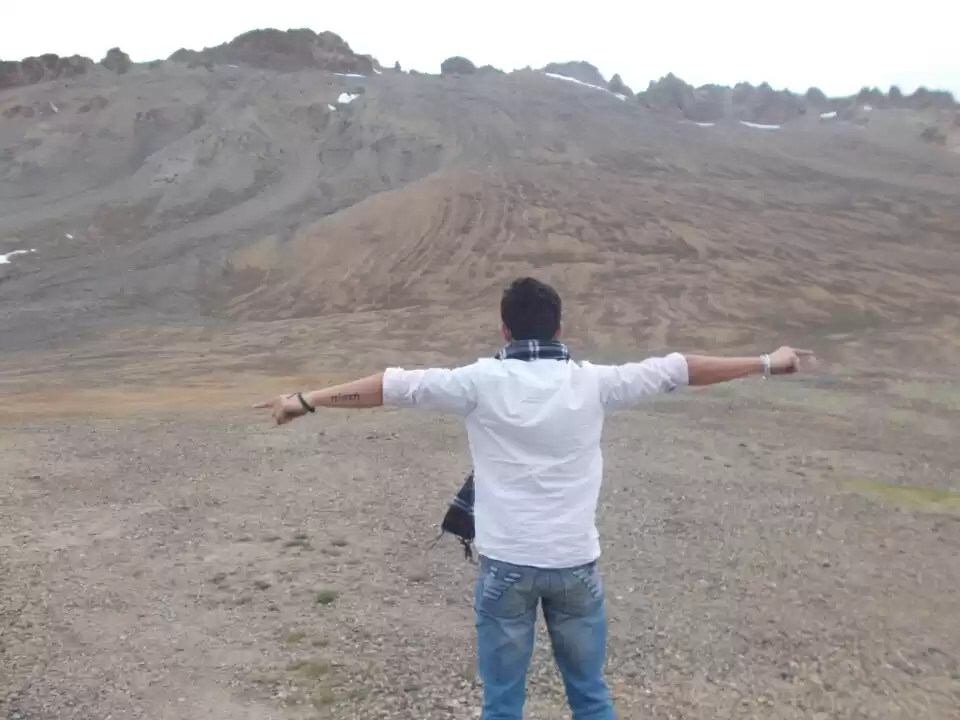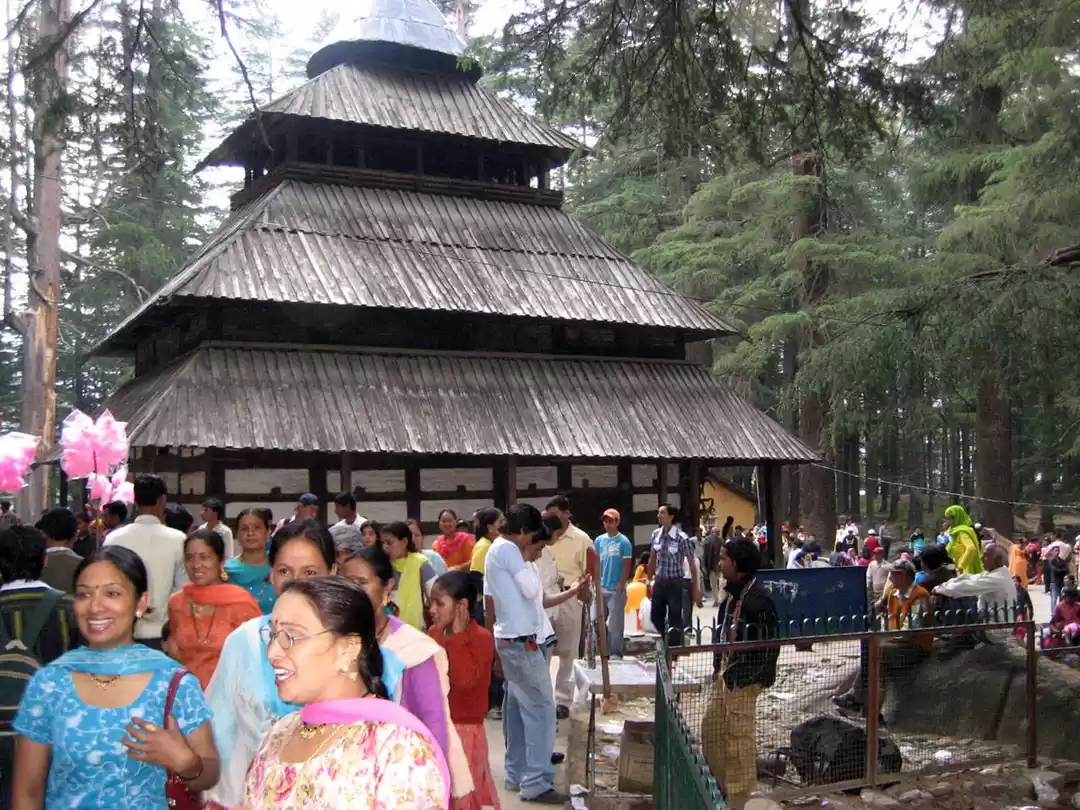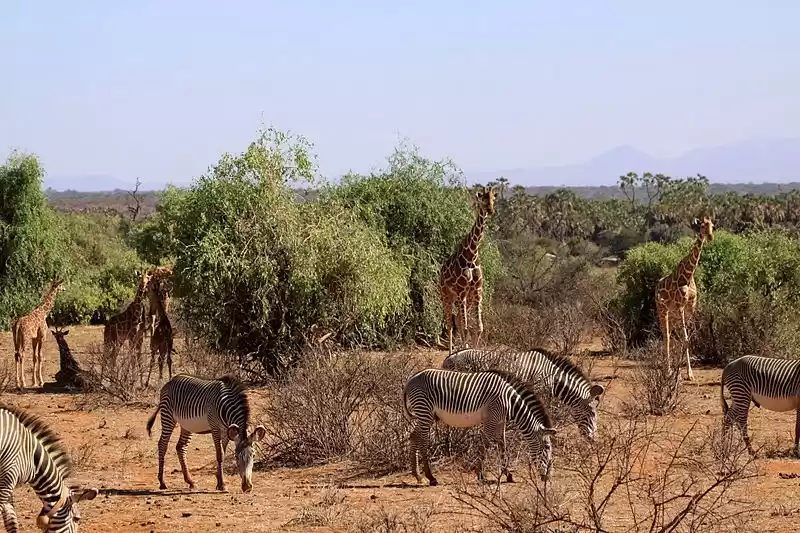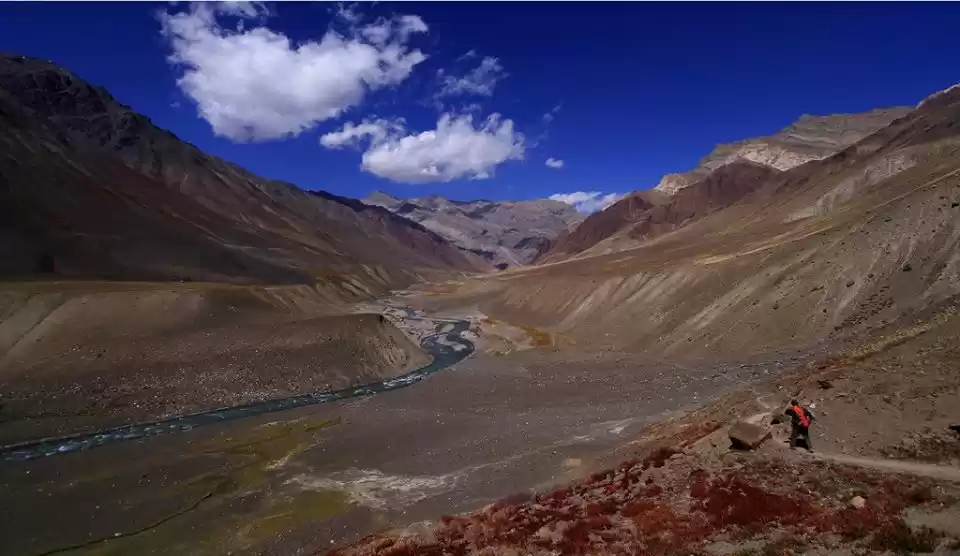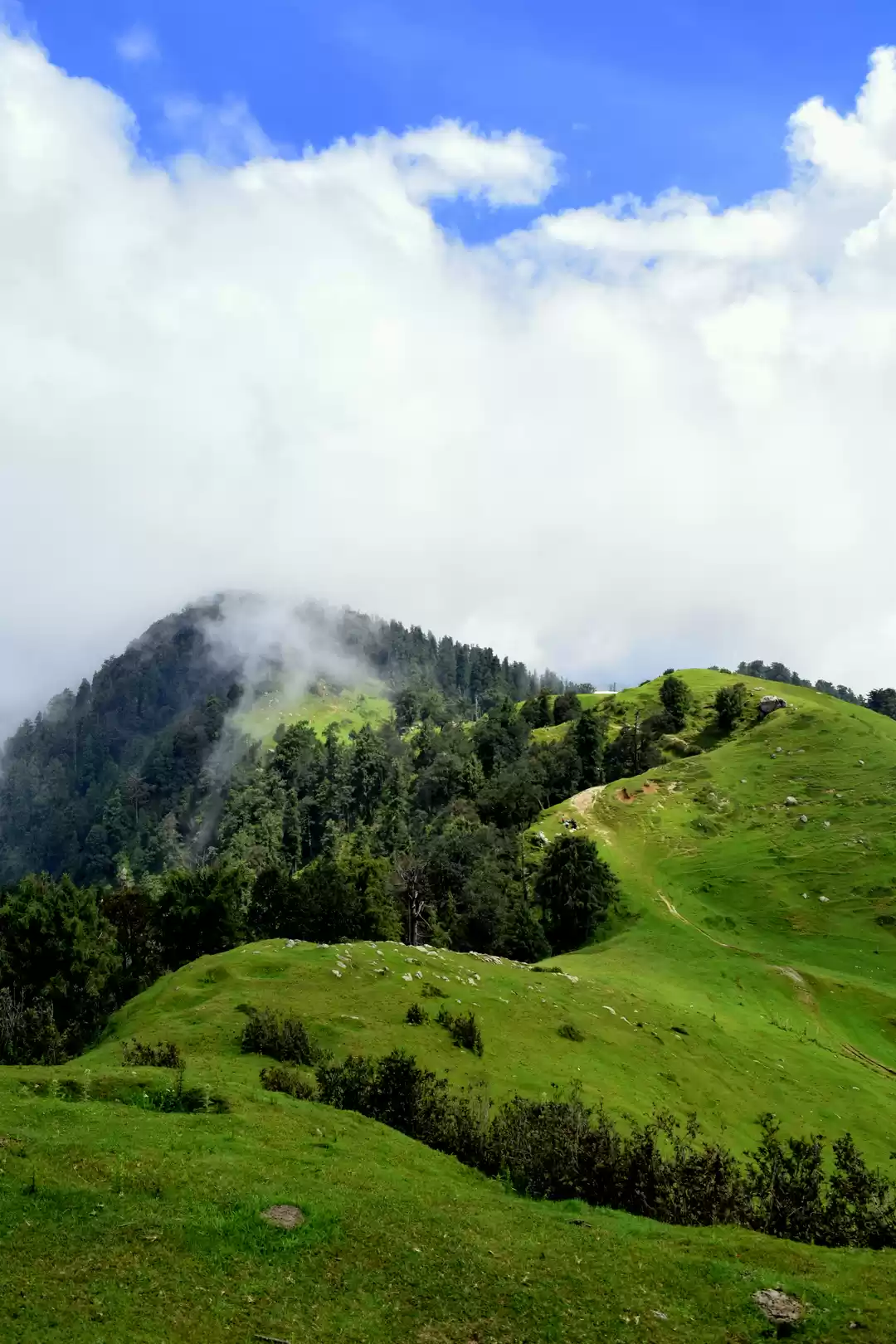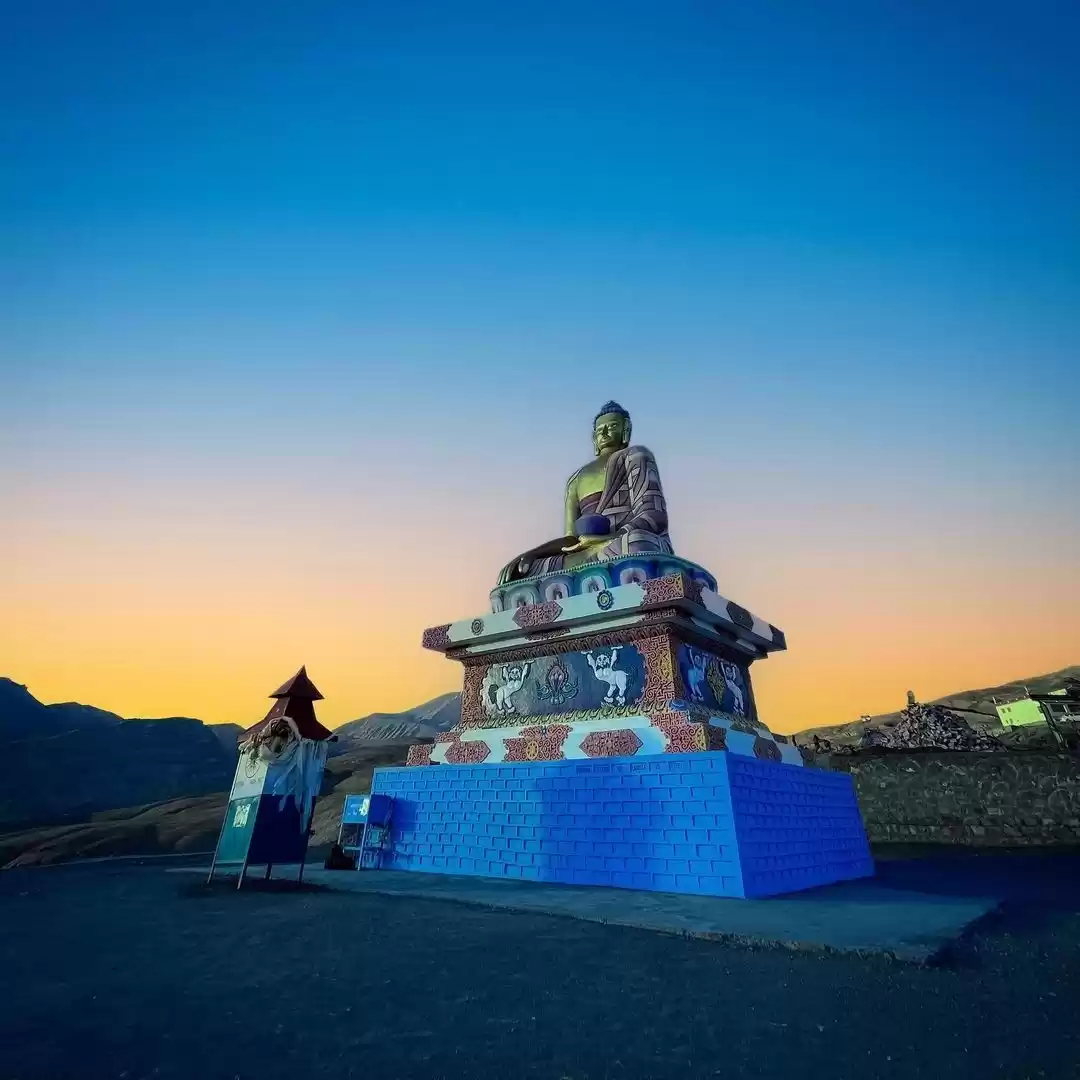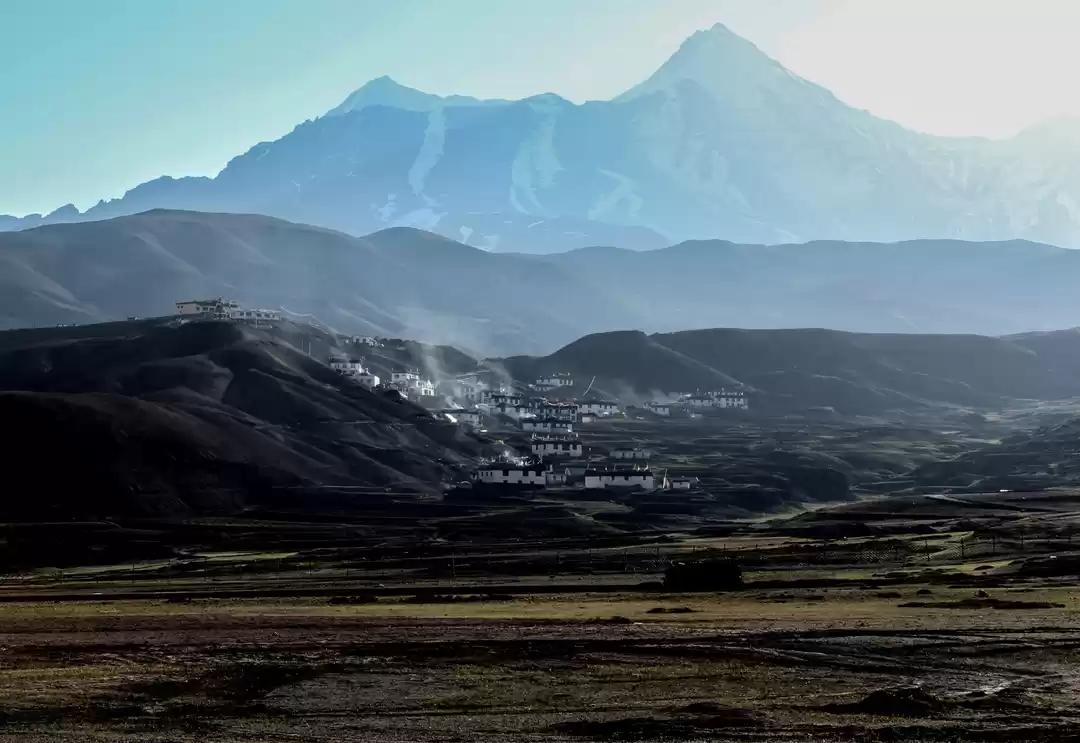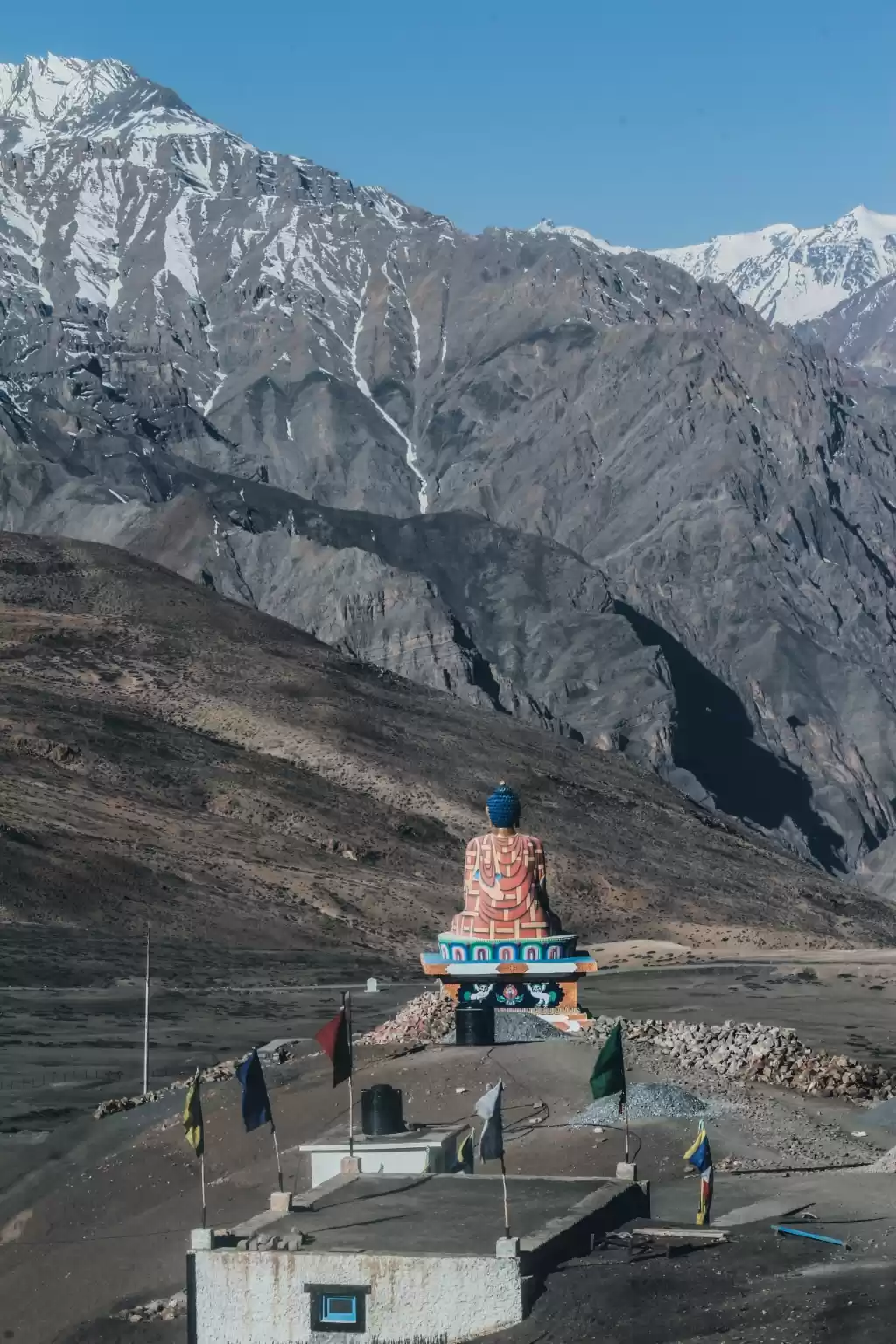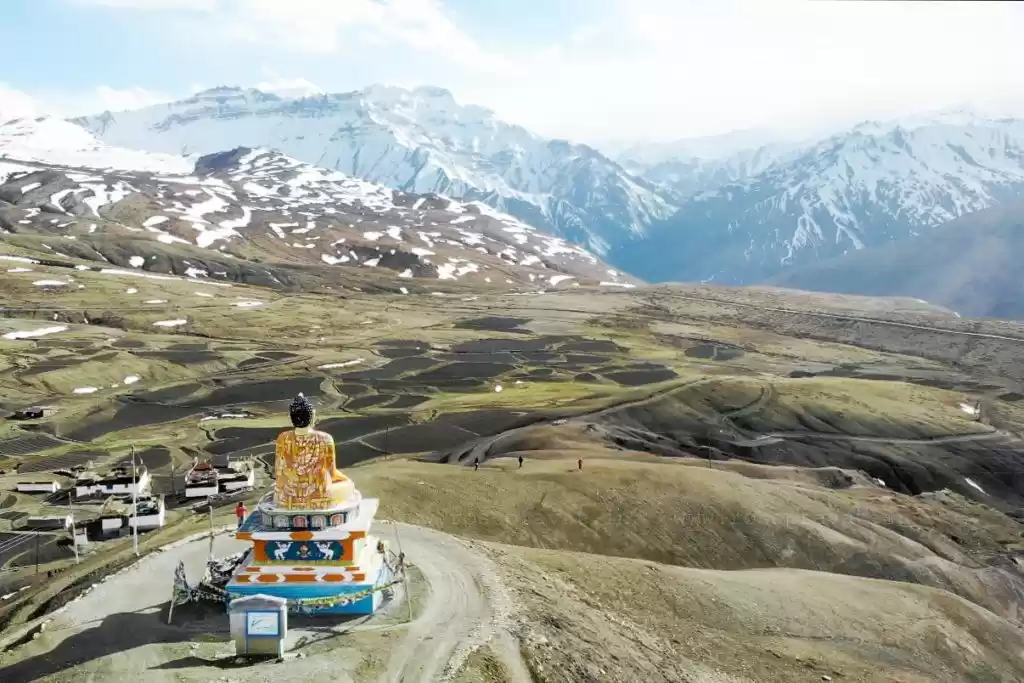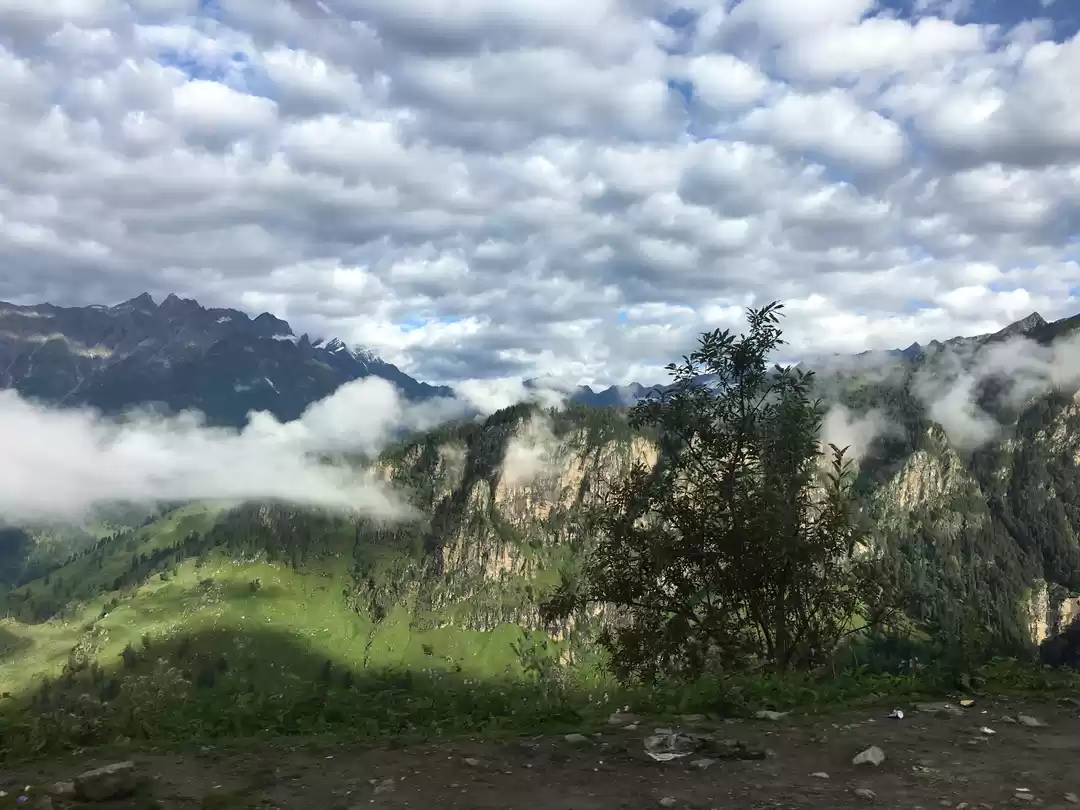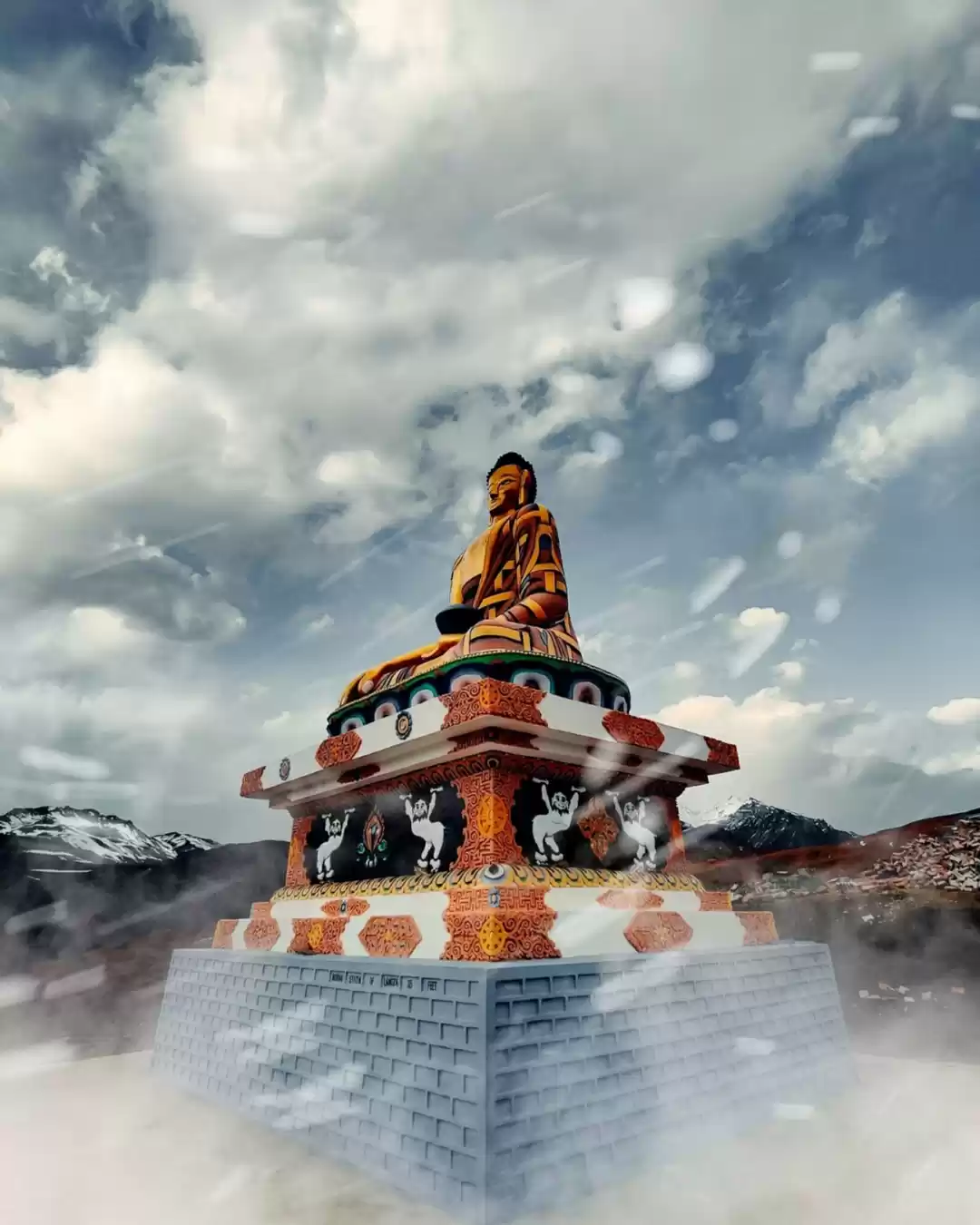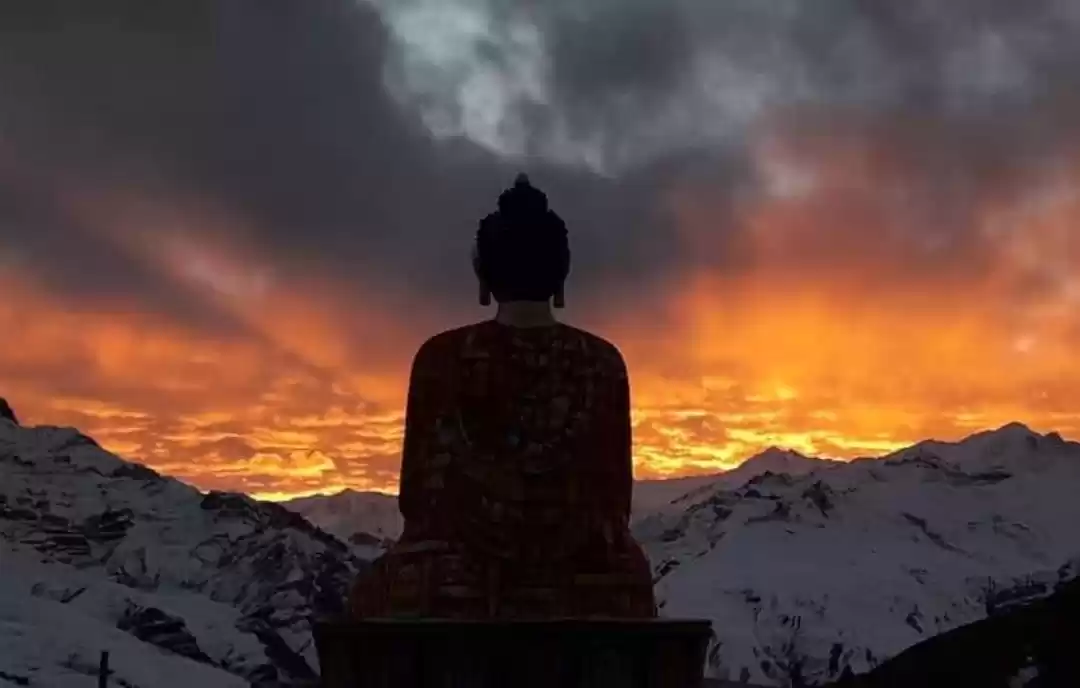Have you ever wondered what it would be like to travel back in time and witness the ancient life forms that once inhabited our planet? If yes, then you should definitely visit Langza Village, a hidden gem in the remote Spiti Valley of Himachal Pradesh. Langza Village is not only a stunning destination for nature lovers and adventure seekers, but also a treasure trove of fossils that date back millions of years. In this article, we will tell you everything you need to know about Langza Village and how to plan a memorable trip there.

How to Reach Langza Village
Langza Village is located at an altitude of 4,400 meters above sea level, about 16 kilometers from Kaza, the headquarters of Spiti Valley. To reach Langza Village, you have to first reach Kaza, which can be done by road or by air.
- By Road: There are two main routes to reach Kaza by road: one from Manali via Rohtang Pass and Kunzum Pass, and the other from Shimla via Kinnaur and Nako. Both routes are scenic and adventurous, but also challenging and unpredictable due to the high altitude, rough terrain, and weather conditions. The distance and time taken to reach Kaza by road are as follows:
- Manali to Kaza: 200 kilometers, 8 to 10 hours
- Shimla to Kaza: 420 kilometers, 12 to 14 hours
You can either drive your own vehicle or hire a taxi or a bus from Manali or Shimla. The road is open from June to October, depending on the snow clearance. The rest of the year, the road is closed due to heavy snowfall and landslides.
- By Air: The nearest airport to Kaza is the Kullu Manali Airport, which is about 250 kilometers away. From there, you can take a taxi or a bus to Kaza, which will take about 8 to 10 hours. Alternatively, you can also take a helicopter service from Kullu to Kaza, which operates twice a week and takes about an hour. However, the helicopter service is subject to availability and weather conditions, and can be quite expensive.
From Kaza, you can take a local taxi or a bus to Langza Village, which will take about 40 minutes. The road is well maintained and offers spectacular views of the Spiti Valley and the snow-capped mountains.
The best time to visit Langza Village is from June to September, when the weather is pleasant and the flowers are in full bloom. The winter months from November to March are extremely cold and harsh, with temperatures dropping below minus 20 degrees Celsius. However, some adventurous travelers prefer to visit Langza Village in winter to experience the frozen landscape and the solitude.
Some tips and precautions for traveling to Langza Village are:
- Carry enough cash, as there are no ATMs or card machines in Langza Village or Kaza.
- Carry warm clothes, woolen socks, gloves, hats, and sunglasses, as the temperature can vary drastically and the sun can be harsh at high altitudes.
- Carry a first-aid kit, medicines, and oxygen cylinders, as the altitude can cause headaches, nausea, dizziness, and breathlessness. Drink plenty of water and avoid alcohol and smoking.
- Carry a camera, binoculars, and a torch, as the views are breathtaking and the nights are dark and starry.
- Respect the local culture, customs, and beliefs, and do not litter or damage the environment.

Where to Stay in Langza Village
Langza Village offers a unique and authentic experience of staying in a homestay, where you can live with a local family and enjoy their hospitality, warmth, and cuisine. There are about 15 to 20 homestays in Langza Village, which provide basic but comfortable facilities, such as clean rooms, beds, blankets, pillows, hot water, and toilets. The homestays charge about 800 to 1000 rupees per person per night, which includes breakfast, lunch, dinner, and tea.
Some of the popular homestays in Langza Village are:
- Norling Homestay: +91 94182 50928
- Tsering Homestay: +91 94181 25328
- Dorje Homestay: +91 94181 25329
- Tashi Homestay: +91 94181 25330
- Sonam Homestay: +91 94181 25331
You can book the homestays in advance by calling the owners or through online platforms like Airbnb or Booking.com. You can also find the homestays on Google Maps or ask the locals for directions.
If you are not comfortable with staying in a homestay, you can also opt for other alternatives, such as:
- Camping: You can pitch your own tent or rent one from the locals or the tour operators, and camp near the village or the Buddha statue. Camping will give you a closer connection with nature and a more adventurous experience. However, you will have to carry your own equipment and food, and be prepared for the cold and windy nights.
- Hotels or Guesthouses: You can find some hotels or guesthouses in Kaza or nearby villages like Hikkim or Komic, which offer more amenities and privacy than the homestays. However, you will have to pay more and travel more to reach Langza Village.

What to See in Langza Village
Langza Village is a feast for the eyes, as it offers some of the most amazing and awe-inspiring sights in the Spiti Valley. Some of the main attractions and landmarks of Langza Village are:
- The Langza Buddha Statue: The most prominent and iconic feature of Langza Village is the giant golden statue of Buddha, which stands tall and serene on a hill overlooking the village. The statue is about 20 feet high and depicts Buddha in a meditative pose, blessing the people and the land. The statue is surrounded by colorful prayer flags and offers a panoramic view of the valley and the mountains. The statue is also a popular spot for photography, as it creates a stunning contrast with the blue sky and the green fields.
- The Lang Temple: The Lang Temple is a small and ancient temple located near the Buddha statue, which is dedicated to the local deity Lang Chenmo. The temple is made of mud and stone and has a simple but elegant architecture. The temple houses some beautiful paintings, sculptures, and relics of the Buddhist culture and history. The temple is also a place of worship and meditation for the villagers and the visitors, who come to seek blessings and peace.
- The Fossil Hunting: Langza Village is famous for its abundance of fossils, which are the remnants of the marine life that existed in the area millions of years ago, when Spiti Valley was a part of the Tethys Sea. The fossils are mostly of ammonites, nautiloids, gastropods, and corals, which can be found scattered on the ground or embedded in the rocks. The fossils are a fascinating and rare sight, as they reveal the secrets and mysteries of the past. However, the fossils are also a protected and precious resource, and collecting or selling them is illegal and punishable. Therefore, you can only admire and photograph the fossils, but not take them away.
- The Chau Chau Kang Nilda Peak: The Chau Chau Kang Nilda Peak is the highest peak in the Spiti Valley, which stands at an altitude of 6,303 meters above sea level. The peak is also known as the Blue Moon Peak, as it glows in a bluish hue during the full moon nights. The peak is visible from Langza Village and offers a majestic and mesmerizing view. The peak is also a popular destination for trekking and mountaineering, as it offers a challenging and rewarding experience. However, the trek to the peak is not for the faint-hearted, as it requires a high level of fitness, skill, and equipment.

What to Do in Langza Village
Langza Village is not only a place to see, but also a place to do. There are many fun and adventurous activities and experiences that you can enjoy in Langza Village and its surroundings. Some of the things that you can do in Langza Village are:
Trekking to the Peak: If you are an adventure lover and a thrill seeker, you can try trekking to the Chau Chau Kang Nilda Peak, which will test your stamina, endurance, and courage. The trek to the peak is about 12 kilometers long and takes about 6 to 8 hours, depending on your speed and fitness. The trek starts from Langza Village and follows a steep and rocky trail that passes through some meadows, streams, and glaciers. The trek offers some stunning views of the Spiti Valley and the surrounding peaks, such as Kanamo, Shilla, and Gya. The trek also gives you a chance to spot some rare and exotic wildlife, such as snow leopards, ibexes, and blue sheep. The trek to the peak is not for the faint-hearted, as it requires a high level of fitness, skill, and equipment.
You will need a guide, a permit, a tent, a sleeping bag, a stove, a water bottle, and some snacks. You will also need to acclimatize yourself to the altitude and the weather, and be prepared for any emergencies or difficulties. The trek to the peak is best done in the summer months, from June to September, when the snow is less and the weather is more favorable.
Wildlife and Nature Exploration: If you are a nature lover and a wildlife enthusiast, you can enjoy exploring the rich and diverse flora and fauna of Langza Village and Spiti Valley. Langza Village is home to some of the most unique and endangered species of animals and plants, which have adapted to the harsh and cold environment. Some of the animals that you can see in Langza Village are:
Snow Leopard: The snow leopard is the most elusive and majestic animal of Spiti Valley, which is also known as the Grey Ghost of the Himalayas. The snow leopard is a large and powerful cat, which has a thick fur coat, a long tail, and a spotted pattern. The snow leopard is a solitary and nocturnal animal, which hunts for prey such as ibexes, blue sheep, and marmots. The snow leopard is also a highly endangered animal, which faces threats from poaching, habitat loss, and climate change. The snow leopard is very difficult to spot, as it blends in with the snow and the rocks. However, you can increase your chances of seeing the snow leopard by joining a wildlife tour or a conservation project, which will take you to the best locations and times to observe the snow leopard. You can also look for the signs of the snow leopard, such as its tracks, scats, scrapes, and kills.

Ibex: The ibex is a large and agile goat, which lives in the high altitudes of Spiti Valley. The ibex has a brown or grey coat, a long beard, and curved horns. The ibex is a herbivorous and social animal, which feeds on grasses, shrubs, and lichens. The ibex is also a prey for the snow leopard, which often chases it on the steep cliffs and ledges. The ibex is relatively easier to spot than the snow leopard, as it is more active and visible during the day. You can see the ibex in the meadows and slopes near Langza Village, especially in the morning and evening hours.
Blue Sheep: The blue sheep is another large and graceful goat, which inhabits the Spiti Valley. The blue sheep has a bluish-grey coat, a short tail, and ridged horns. The blue sheep is also a herbivorous and social animal, which grazes on grasses and herbs. The blue sheep is also a prey for the snow leopard, which often ambushes it from behind the rocks and boulders. The blue sheep is also relatively easier to spot than the snow leopard, as it is more abundant and widespread in the valley. You can see the blue sheep in the pastures and hills near Langza Village, especially in the winter months, when they descend to lower altitudes.
Some of the plants that you can see in Langza Village are:
- Edelweiss: The edelweiss is a beautiful and rare flower, which grows in the alpine regions of Spiti Valley. The edelweiss has a white and fluffy appearance, which resembles a star or a snowflake. The edelweiss is also a symbol of love and courage, as it is often given as a gift or a souvenir by the lovers and the mountaineers. The edelweiss is also a protected and endangered plant, which faces threats from over-harvesting, grazing, and climate change. The edelweiss is very hard to find, as it grows in the inaccessible and remote areas. However, you can increase your chances of seeing the edelweiss by visiting Langza Village in the summer months, from June to August, when the flower blooms and covers the hills and meadows with its white and fluffy beauty.
- Seabuckthorn: The seabuckthorn is a common and useful plant, which grows in the Spiti Valley. The seabuckthorn is a shrub or a small tree, which has a thorny and dense branches, and orange and sour berries. The seabuckthorn is also known as the wonder plant, as it has many medicinal and nutritional benefits. The seabuckthorn is used to make juices, jams, teas, oils, and cosmetics, which are good for the health, skin, and hair. The seabuckthorn is also a source of income and livelihood for the locals, who collect and sell its products. The seabuckthorn is easy to spot, as it grows along the roads and rivers of the valley. You can see the seabuckthorn in Langza Village, and also taste its products, which are sold by the locals or the shops.

Local Cuisine and Culture: If you are a foodie and a culture buff, you can enjoy tasting the delicious and organic food of the Spiti cuisine and witnessing the vibrant and colorful culture of the Spiti people. Some of the dishes that you can try in Langza Village are:
Thukpa: Thukpa is a hearty and spicy soup, which is made of noodles, vegetables, and meat. Thukpa is a staple and comfort food of the Spiti people, which is perfect for the cold and dry climate. Thukpa is served hot and garnished with coriander and chili. You can find thukpa in almost every homestay or restaurant in Langza Village, and also customize it according to your preference and taste.
Momos: Momos are dumplings, which are filled with minced meat, cheese, or vegetables. Momos are a popular and tasty snack of the Spiti people, which are steamed or fried and served with spicy sauces. Momos are also available in different shapes and sizes, such as round, crescent, or flower. You can find momos in many homestays or restaurants in Langza Village, and also try making them yourself with the help of the locals.
Chhang: Chhang is a local alcoholic beverage, which is made of fermented barley or rice. Chhang is a traditional and ceremonial drink of the Spiti people, which is served in a wooden or metal cup and sipped through a bamboo straw. Chhang is a strong and warming drink, which can help you cope with the altitude and the cold. Chhang is also a social and festive drink, which is shared and enjoyed with friends and family. You can find chhang in some homestays or shops in Langza Village, but be careful not to drink too much, as it can have side effects.
Some of the festivals that you can witness in Langza Village are:
- Losar: Losar is the Tibetan New Year, which is celebrated in the month of February or March, according to the lunar calendar. Losar is a grand and joyous festival, which marks the end of the winter and the beginning of the spring. Losar is celebrated with prayers, rituals, dances, songs, and feasts. Losar is also a time to welcome the new and bid farewell to the old, by cleaning the houses, making offerings, and exchanging gifts. You can join the Losar celebrations in Langza Village, and experience the culture and spirit of the Spiti people.

- Buddha Purnima: Buddha Purnima is the birth anniversary of Lord Buddha, which is celebrated in the month of May or June, according to the lunar calendar. Buddha Purnima is a sacred and auspicious festival, which commemorates the life and teachings of Lord Buddha. Buddha Purnima is celebrated with prayers, processions, and ceremonies. Buddha Purnima is also a time to pay homage and gratitude to Lord Buddha, by visiting the temples, lighting the lamps, and offering the flowers. You can witness the Buddha Purnima celebrations in Langza Village, and admire the beauty and serenity of the Buddha statue.
Conclusion
Langza Village is a must-visit destination for anyone who wants to explore the hidden and unspoiled beauty of Spiti Valley. Langza Village offers a unique and unforgettable experience of staying in a homestay, seeing the fossils, trekking to the peak, exploring the wildlife and nature, and tasting the cuisine and culture of the Spiti people. Langza Village is a place where you can find peace, adventure, and wonder, all in one. So, what are you waiting for? Plan your trip to Langza Village and discover the fossil paradise of Spiti Valley.
We hope this article helps you with your travel plans. If you have any questions or feedback, please feel free to comment or contact us. Thank you for reading and happy traveling!



